Many years ago, when I was living in London, I decided that the best thing about living in that particular capital was the number of cheap flights out of it. Every second paycheque, I’d pick a city I’d never been to before and take off. This wasn’t today or yesterday; it was long before digital cameras and blogging. I got holidays, too, of course, and one year I took a week or maybe ten days to visit Poland. I flew into Warsaw and then took the train to Kraków via Częstochowa. [I was toying with the idea of doing a series on the Black Madonnas of Europe and the Black Madonna of Częstochowa was high on my list. I have clear recollections of creeping around the shrine on my knees and feeling every inch of it.]
On the train to Kraków, I met an American woman (the lovely SvN) who told me about the chakra at Wawel Cathedral. That corner of the courtyard where time takes on new meaning. She drew me a map and explained where I’d find it. Chances were that some yoga-head would be meditating there and would mark the spot.
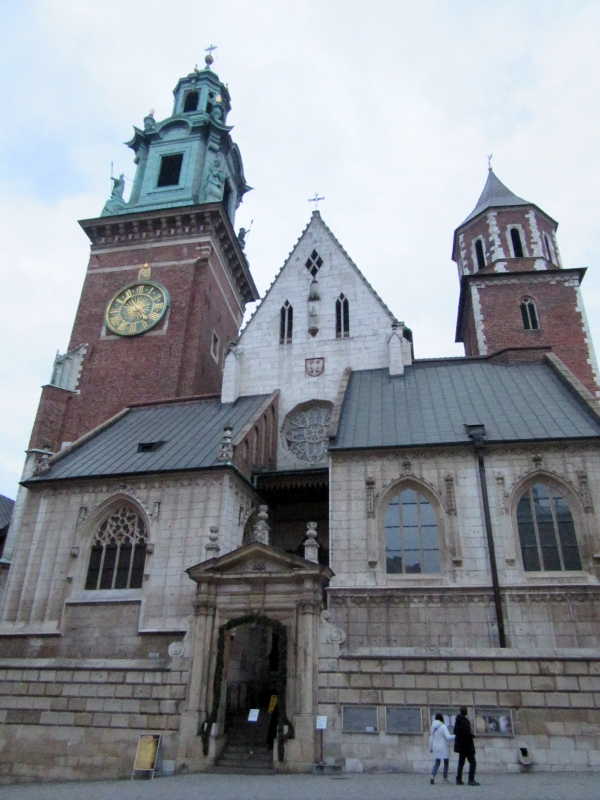
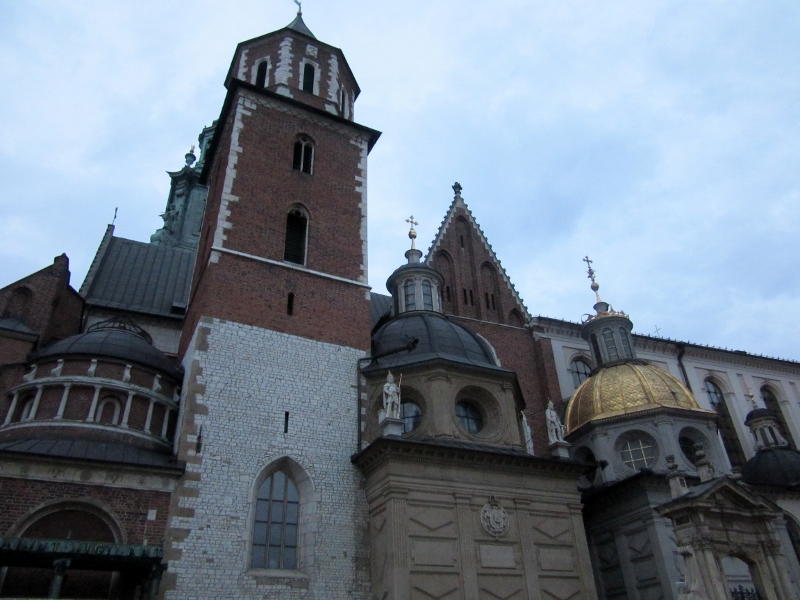
I found it. I can squat. I can’t sit cross-legged. So I compromised and sat with my back against the wall. I tried to tune out the world but nothing happened. I did manage to clear my mind for what seemed like a second or three and then the world came flooding back in. I got up, frustrated. Annoyed with myself that I couldn’t still my mind, that I couldn’t meditate. I checked my watch. Two hours had passed. Those few seconds were more than seconds. For two hours I’d been somewhere else – and I’ve no idea where.
This trip, I wanted to go back, to see if the same thing would happen. I took a taxi from my workshop and headed to the Cathedral. But it was closed. I got to wander the grounds for about ten minutes, before I was shepherded out. I didn’t make it inside the inner quad at all.
But I read up on it and it appears that sitting next to or even touching the wall is frowned upon. In Your Pocket has this to say:
Castle staff […] consider the legend a nuisance and have done everything they can to deflect attention away from Wawel’s famous corner, including putting up a sign asking people to refrain from touching it (not working, fellas), roping it off, putting museum exhibits over top of it and having a guard stand nearby – as was the case during our last visit. Some people credit the chakra with protecting the city through its tumultuous history, but Wawel tour guides are stricken from speaking about the chakra stone, as you’ll quickly learn if you broach the topic with one. The Catholic Church and its firm followers also dismiss the legend of the chakra, despite the fact that its location at the most important spiritual site in the country (Wawel Cathedral), could just as easily be seen as a compliment. Whatever the case, there are indeed strange and powerful forces at work on Wawel Hill.
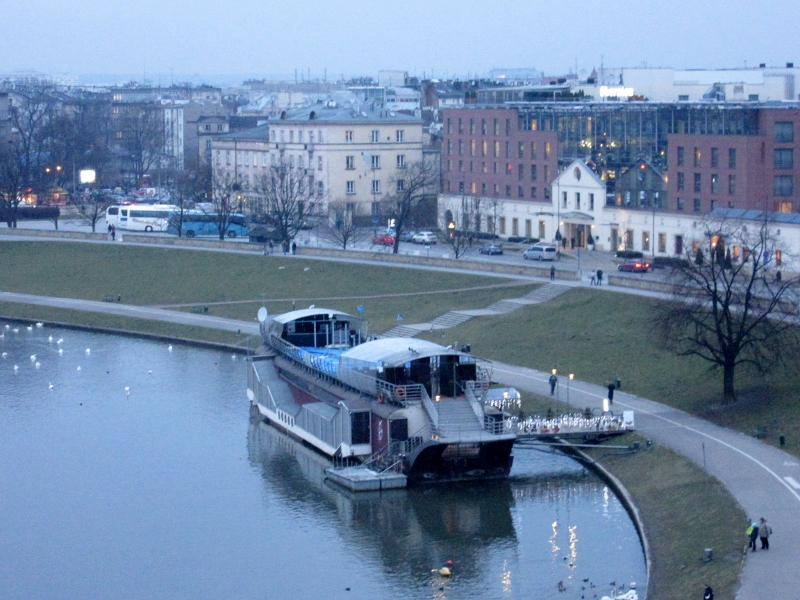
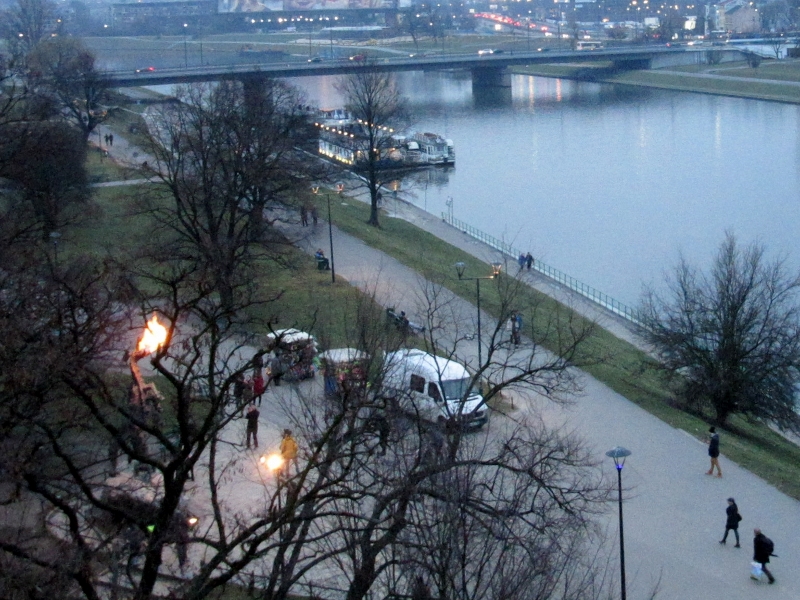
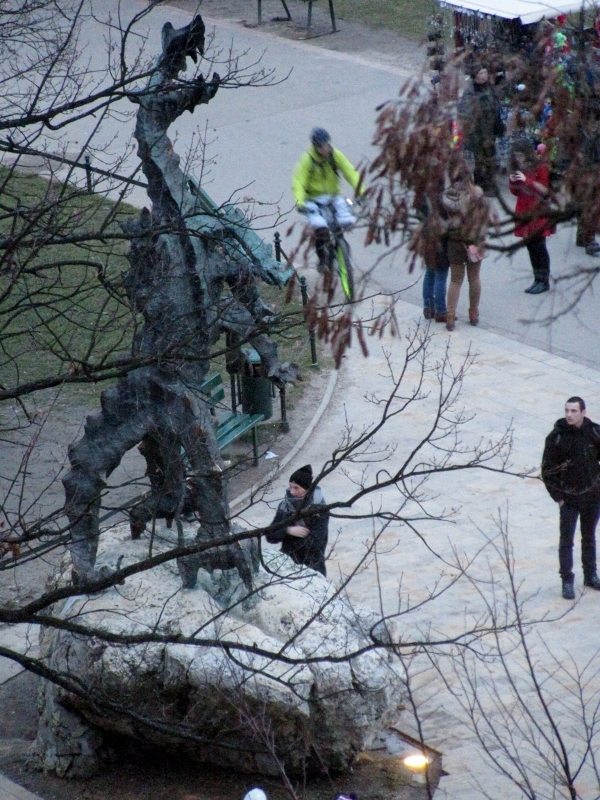
What I did get though was a lovely view of the city, an overview of a Kraków evening. The boats moored on the Vistula River. The clubs and restaurants with their neon lights. The bridges that join the Jewish Quarter to the old Ghetto. And the dragon.
Eons ago, when Poland was still a baby, there was a small village on the banks of the River Vistula, close to Wawel hill. At the base of the hill was a deep cave in which, rumour had it, a fierce dragon lived. The young people in the village didn’t believe the stories. They thought they knew better than their elders. One day some of them decided to go exploring. They found their way into the cave and disturbed the sleeping dragon who was rightly upset. Every day from then on, the dragon would steal a sheep or a young virgin and eat them. The village was in turmoil and lived in fear. But there was a hero – there’s always a hero. And depending on what you read, this hero was (a) a wise man, (b) the village shoemaker, or (c) the shoemaker’s apprentice. Whatever his job, we can agree that his name was Krac. Anyway, the clever chap mixed a thick yellow sulphur paste and painted it on some sheep. He then herded the sheep within sight of the dragon who did as dragons do and ate them. The sulphur kicked in and the dragon, dying of thirst, went to the river and drank so much water, he exploded. The village was saved. Krac was the hero and the city that grew up around the hill was called Kraków.
You learn something new every day.
Share this:
- Click to share on Twitter (Opens in new window)
- Click to share on Facebook (Opens in new window)
- Click to share on Pinterest (Opens in new window)
- Click to share on LinkedIn (Opens in new window)
- Click to share on Reddit (Opens in new window)
- Click to share on WhatsApp (Opens in new window)
- Click to share on Pocket (Opens in new window)
- Click to share on Telegram (Opens in new window)
- Click to email a link to a friend (Opens in new window)



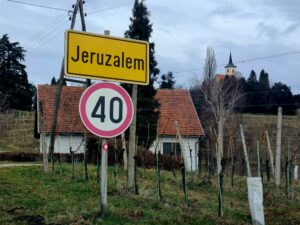



4 Responses
Isn’t it Kraków where they play a strange, abruptly terminated trumpet-call every day? A legend about the watchman being shot by the invading Turks just as he was giving the alarm?
Can’t say – don’t remember hearing anything like a trumpet, truncated or not …
I visited Wawel Cathedral about 12 months ago and then 2 burly priests were vetting visitors………people of Polish extraction got in, tourists didn’t! I got in but the rest of my party were denied entry……clearly they picked up on my aristocratic Polish ancestry.
I wish I had known about the chakra….next time.
Compared to British and French cathedrals the Polish cathedrals and churches were dark, gloomy and fantastic peices of drama. The deep colours of the fabrics together with the abundance of gold colours lit by candles and winter light through the small windows created very special sacred places………..it was a very pleasant suprise and changed my view of such churches.
I agree that Krakow is very special and well worth return visits………how come you didn’t mention the food or the wine bars and coffee houses around and below the main square.
I did … I did… patience 🙂